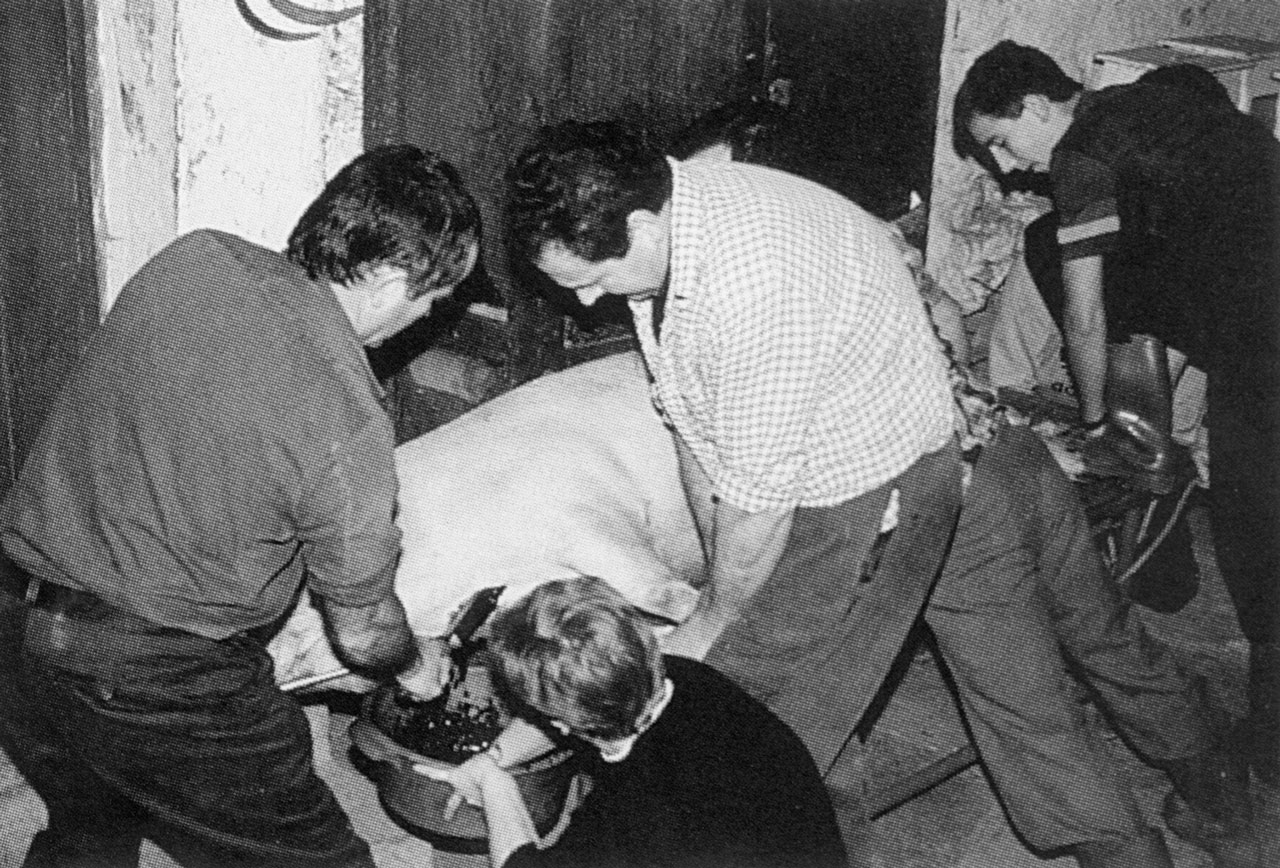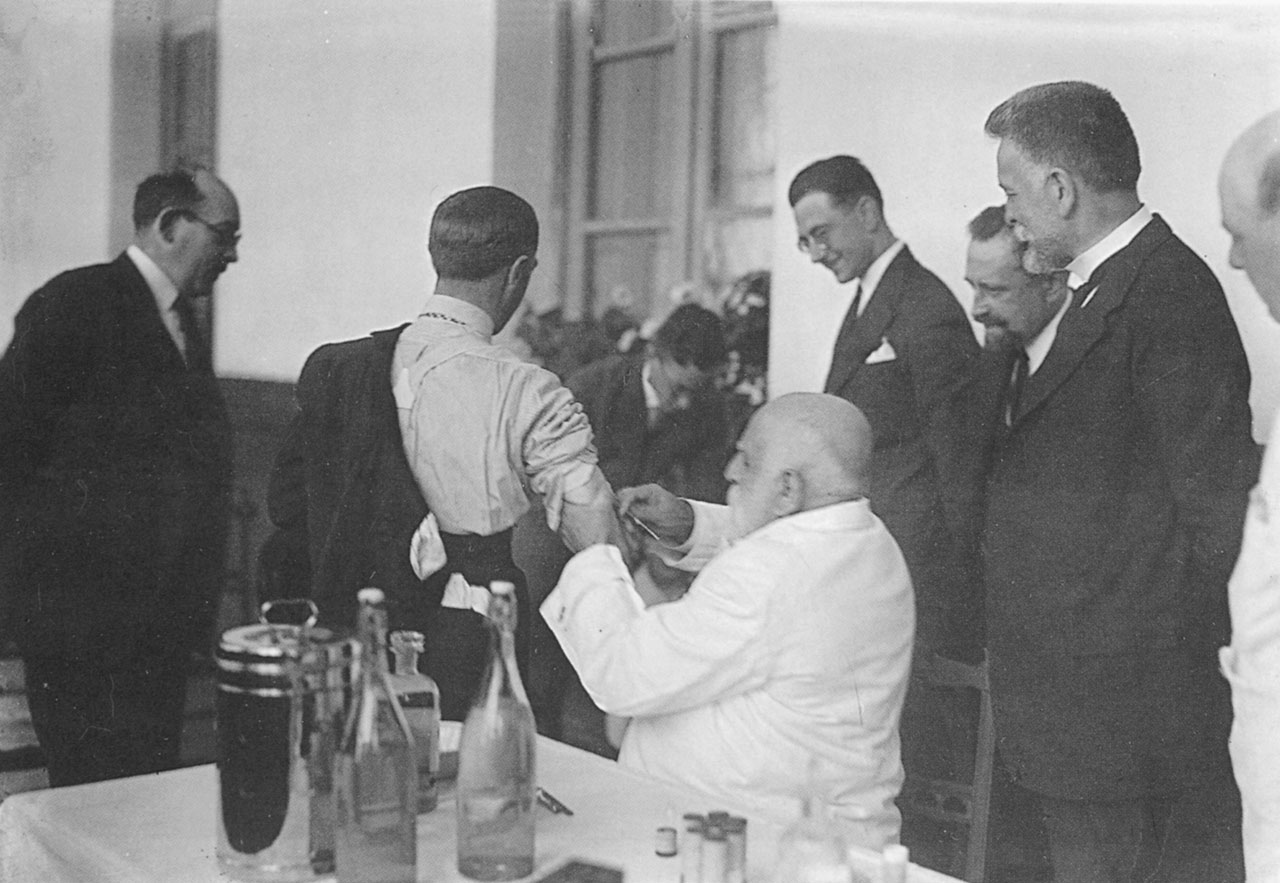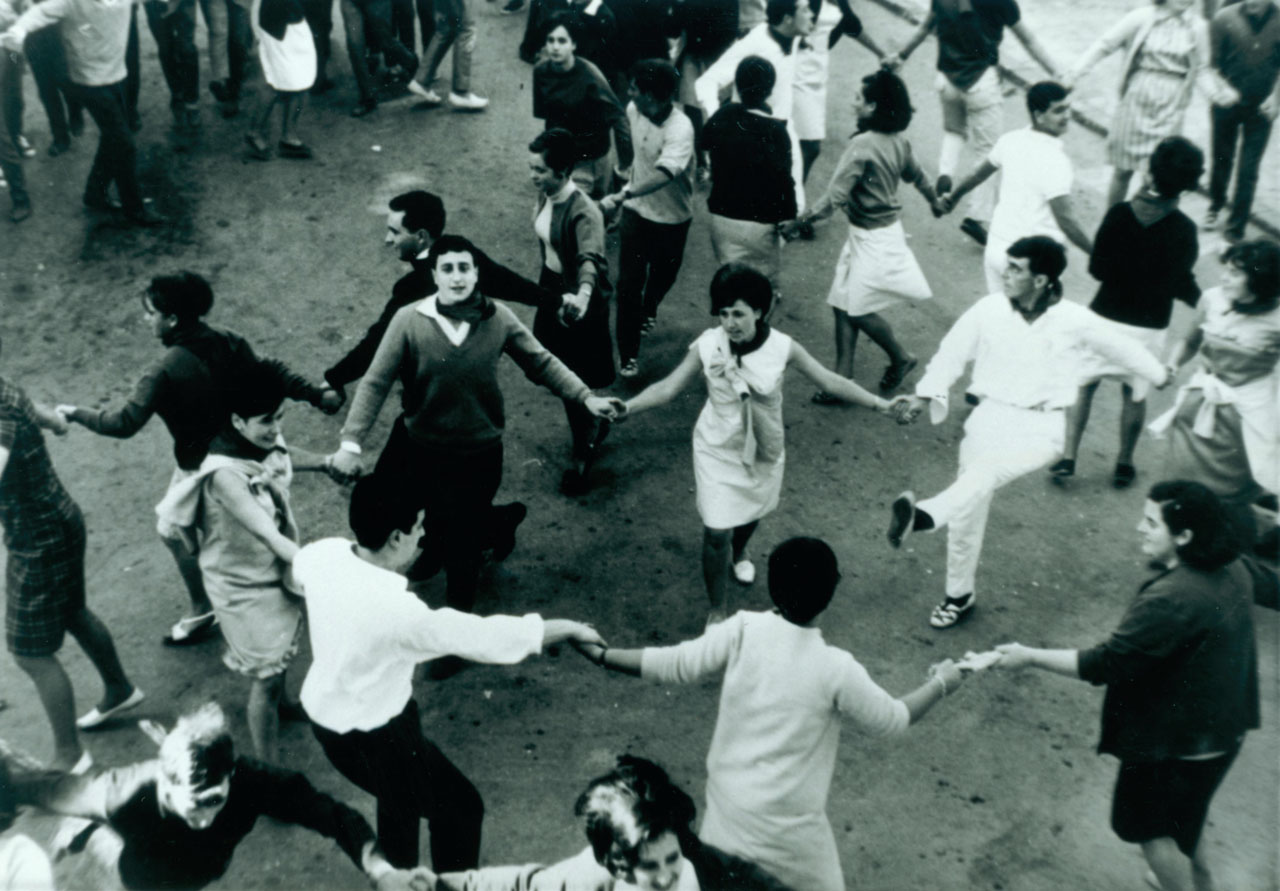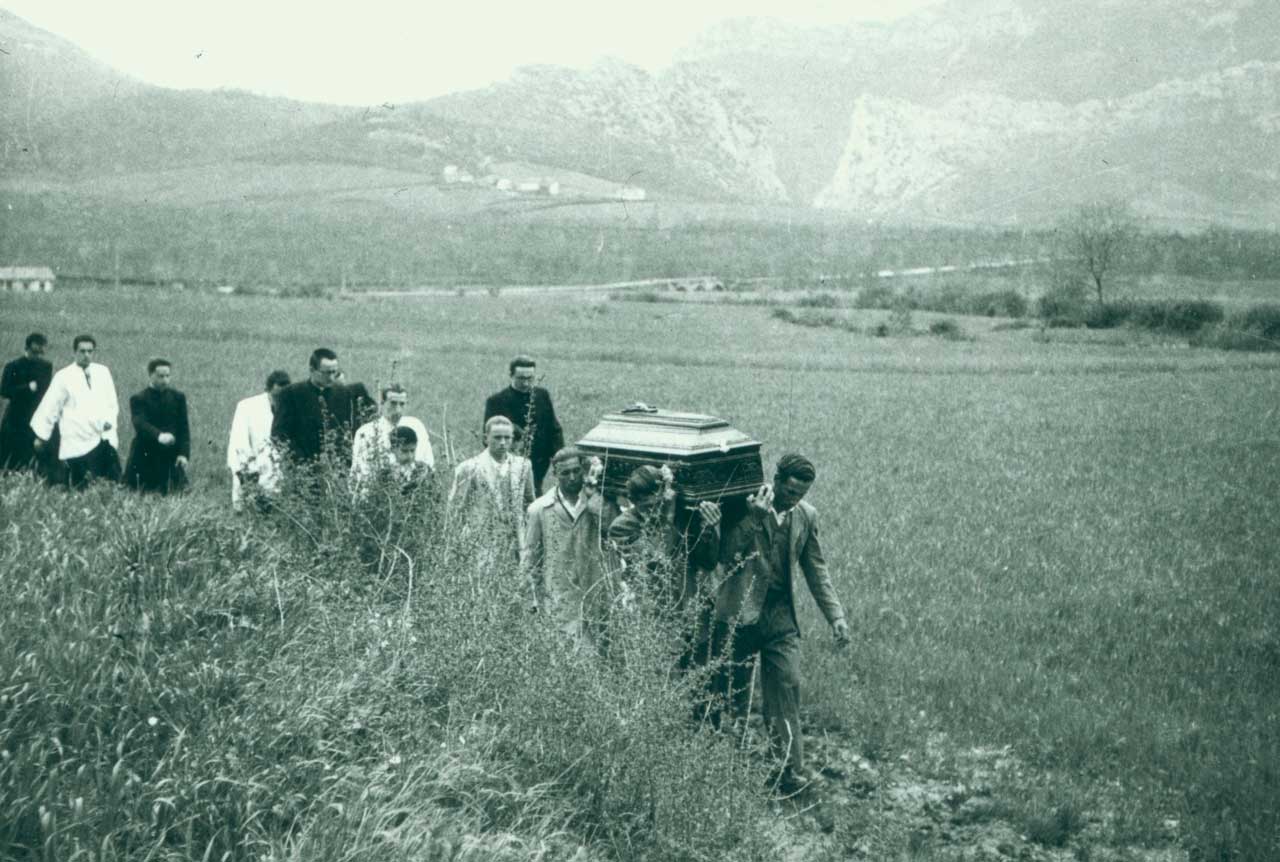Old and young husband and wife. Areatza (B), beginning of the 20th century. Source: Rubén de Las Hayas’ private archive.
House and Family in the Basque Country


House and Family in the Basque Country
The aim was to ensure that the family wealth, taken to be the farmstead and its belongings, would be passed on in full or only slightly diminished, and improved if possible, from parents to their offspring.
Family Diet in the Basque Country


Family Diet in the Basque Country
Odolosteak ordeaz. Neighbours and relatives are given black puddings and other pork cuts as a gift at pig slaughter time. It is an act of courtesy, an expression of the close bond shared with them, and part of an established exchange ritual.
Leapfrog. Zeanuri (B), 1920. Source: Labayru Fundazioa Photograhic Archive: Felipe Manterola Collection.
Children’s Games in the Basque Country


Children’s Games in the Basque Country
—Arre, arre, mandako, bihar Tolosarako, etzi Panplonarako. —Handik zer ekarriko? —Zapata ta garriko. Children’s chant
Traditional Medicine in the Basque Country


Traditional Medicine in the Basque Country
Pharmaceutical products have gradually replaced traditional cures.
Rites from Birth to Marriage in the Basque Country


Rites from Birth to Marriage in the Basque Country
Gazteak, badakizue zelan dantzan egin: burua gora-gora ta kaderai eragin. Copla antigua
Ritos funerarios en Vasconia


Ritos funerarios en Vasconia
Morir en día de lluvias o que llueva después del óbito es señal que indica la salvación del alma: gorputz ona, euritsu.
Ganaderia y pastoreo en Vasconia


Ganaderia y pastoreo en Vasconia
A finales de la Edad Media los rebaños de los valles vascos confluían a las mismas montañas que en nuestros días constituyen los principales puntos de concentración pastoril veraniega.
Agricultura en Vasconia


Agricultura en Vasconia
Hasta la década de los años 1950 el molino harinero era un elemento indispensable en la economía grícola-ganadera de nuestros pueblos.







